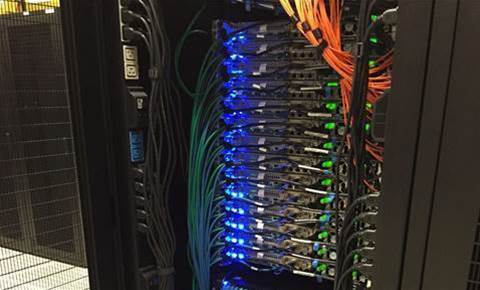The University of Sydney has unveiled the third iteration of its Artemis supercomputer, adding more GPUs to the system to power a large tranche of artificial intelligence research.

The university first launched Artemis in 2015, which was then equipped with 1512 cores for researchers to run complex data analysis in academic areas such as bioinformatics, economics and mechanical engineering.
Artemis’ power was trebled a year later to underpin a new, university-wide informatics capability.
The latest upgrade, which came online for researchers in January this year, was made in part to support the $7.5 million UBTECH Sydney artificial intelligence centre set up in mid 2017.
The third iteration of Artemis cost $2.3 million and is once again built on Dell high performance computing (HPC) hardware.
It consists of 49 PowerEdge C6420 nodes, 27 PowerEdge C4140 nodes and 700TB of Lustre storage, the university said in a statement.
The C4140s contain both Xeon processors and four NVIDIA Tesla V100 GPUs.
"Additionally, the NVIDIA Tesla V100 is equipped with 640 Tensor Cores, delivering 125 Teraflops of deep learning performance," the university said.
Prior versions of Artemis lacked the "dedicated NVIDIA Tesla GPU cores’ computational power and therefore were less suitable for the university’s next level of AI and machine learning research", it said.
The university's strategic ventures director Dr Jeremy Hammond said the upgrade was necessary as the university’s research continues to grow and evolve, demanding more power from compute.
Hammond told iTnews a driver behind the upgrades and decision to include more GPUs was the increase in AI and machine learning research, especially that being conducted at the UBTECH facility.
“The Artemis 3 expansion is genuinely a shift from us servicing the traditional bioinformatics and modelling simulation space to a new discipline that we had previously not prioritised," he said.
“When it comes world leaders in AI researchers, [UBTECH director] Dacheng Tao is really top of the pile… that’s the reason we’ve heavily invested in [GPUs] as opposed to giving some more capacity for the community.”
The new components were ordered in November last year, and we gradually brought online in January this year.
Hammond said the installation and integration of the new hardware only resulted in “a day or two” of downtime thanks to previous experiences expanding Artemis.
The window was negotiated with academic staff to minimise the impact on their workflows.
Demand for the new capabilities is already high, with 80 percent of the resources already in use.




.png&h=140&w=231&c=1&s=0)





 iTnews Executive Retreat - Security Leaders Edition
iTnews Executive Retreat - Security Leaders Edition











_(1).jpg&h=140&w=231&c=1&s=0)



